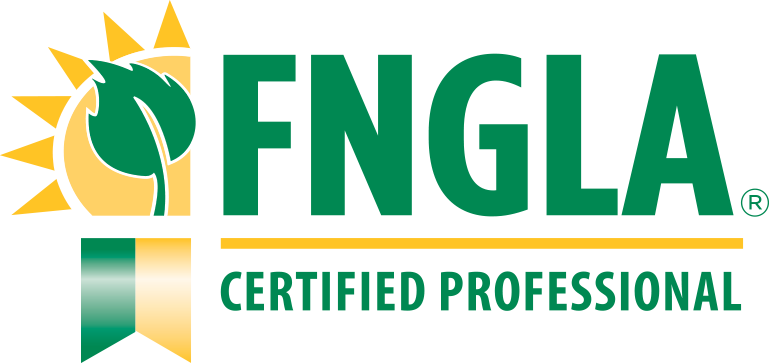
by Sheila Dunning | Dec 3, 2021
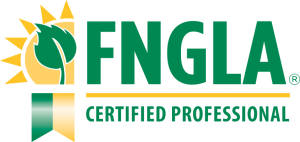 No previous experience or accreditation it required to be a landscaper in the state of Florida. So when homeowners are searching for service providers, it is important that they question potential companies about their skills. One good measure is completion of voluntary certifications such as the Florida Nursery, Growers and Landscape Association (FNGLA) Certified Horticulture Professional (FCHP). The FCHP program has been the industry’s standard for measuring horticulture and landscape knowledge since 1984. The training is also useful for property managers, homeowner associations, retail garden center employees, or anyone that wants to know more about Florida’s plants and their care.
No previous experience or accreditation it required to be a landscaper in the state of Florida. So when homeowners are searching for service providers, it is important that they question potential companies about their skills. One good measure is completion of voluntary certifications such as the Florida Nursery, Growers and Landscape Association (FNGLA) Certified Horticulture Professional (FCHP). The FCHP program has been the industry’s standard for measuring horticulture and landscape knowledge since 1984. The training is also useful for property managers, homeowner associations, retail garden center employees, or anyone that wants to know more about Florida’s plants and their care.
Plants are complex and variable living things that range from microscopic to the largest of living organisms. With steady population growth in the state of Florida, environmental damage risks created by the use of improper products and practices has continually risen. State and federal natural resource protection agencies have restricted certain horticultural practices including fertilizer and pesticide application. It takes scientific knowledge to properly maintain lawns and landscapes, not just a “green thumb” in order to keep plants healthy while reducing contamination to the soil, air and water that we all need.
The Florida Certified Horticulture Professional training covers 16 areas, including identification, fertilization, irrigation, pest management, safety and business practices. Lecture and hands-on activities are utilized at each session. The 60-hour course will enhance anyone’s knowledge and will provide the basis for professionals to deliver a skilled service to clientele. The course is available in-person or virtually via Zoom.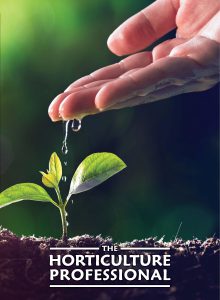
If you are a green industry worker or a concerned citizen interested in attending a FCHP preparatory course, there is an opportunity coming up in Crestview. Beginning Thursday, January 6, 2022 and continuing for 8 weeks to February 24, 2022, the Okaloosa County Extension office will be providing training for $185, which included the newest hard copy manual and plant identification book. Contact Sheila Dunning, 850-689-5850, sdunning@ufl.edu for more information.
For more details and to register go to: https://www.eventbrite.com/e/florida-certified-horticulture-professional-fchp-training-tickets-215748017127
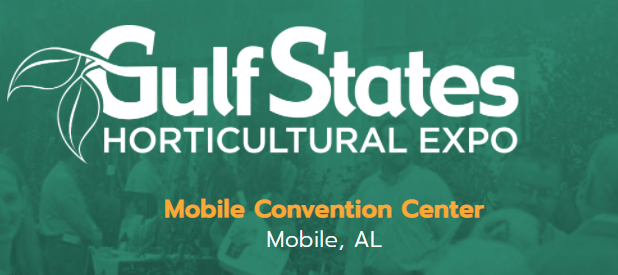
by Sheila Dunning | Dec 3, 2021
 Here in Northwest Florida, finding horticultural supplies and plant material available locally is a challenge. Due to our location, looking to the neighboring states is very practical. A great resource to fill these needs is The Gulf States Horticultural Expo (GSHE) trade show and education event for green industry professionals will be held in Mobile in January, 2022. Attendee profiles include wholesale growers, landscape professionals, retailers, manufacturers, and distributors. Produced in partnership between the Alabama Nursery & Landscape Association (ALNLA), the Mississippi Nursery & Landscape Association (MNLA), and the Louisiana Nursery & Landscape Association (LNLA), the Expo’s goals are to increase commerce, networking, and professional development among the green industry and allied suppliers. Since the first Expo in 1999, GSHE has grown to become THE premier winter trade show of the South.
Here in Northwest Florida, finding horticultural supplies and plant material available locally is a challenge. Due to our location, looking to the neighboring states is very practical. A great resource to fill these needs is The Gulf States Horticultural Expo (GSHE) trade show and education event for green industry professionals will be held in Mobile in January, 2022. Attendee profiles include wholesale growers, landscape professionals, retailers, manufacturers, and distributors. Produced in partnership between the Alabama Nursery & Landscape Association (ALNLA), the Mississippi Nursery & Landscape Association (MNLA), and the Louisiana Nursery & Landscape Association (LNLA), the Expo’s goals are to increase commerce, networking, and professional development among the green industry and allied suppliers. Since the first Expo in 1999, GSHE has grown to become THE premier winter trade show of the South.
Educational Opportunities:
Awareness of pest problems present in neighboring states helps Northwest Florida green industry personnel develop more effective scouting programs. On Wednesday, January 19, 2022 researchers, professors and faculty from well-known Southern universities and colleges across the United States will present valuable information during the Pest Management education session. You can earn up to 8 Florida CEUs in multiple categories including all the Lawn & Ornamental, Demo & Research, Forest Pest, Natural Areas, Ag Tree, Private Applicator, and Right-of-Way. Please note that no CORE CEUs will be available at this event.
If learning more about business management or new plant varieties appeals to you, plan on attending the Business and Culture or Plant Conference session. Jeff Manus from the University of Mississippi delivers a two-part session on Weeders to Leaders during the business training. Speakers from Southern Living, Bracy’s Nursery, Proven Winners, Louisiana State University, Ball Horticultural Company and Plant Development Services will introduce new and exciting plant selections for 2022 during the plant conference.
If landscape design is your passion, spend all day Wednesday through Friday with Richard Ludwig and Bill Slack in the Landscape Design sessions. Learn the fundamentals of profitability, color graphics and how to create the ultimate landscape design over the three days.
For more information and to register go to: https://www.gshe.org/schedule.cfm
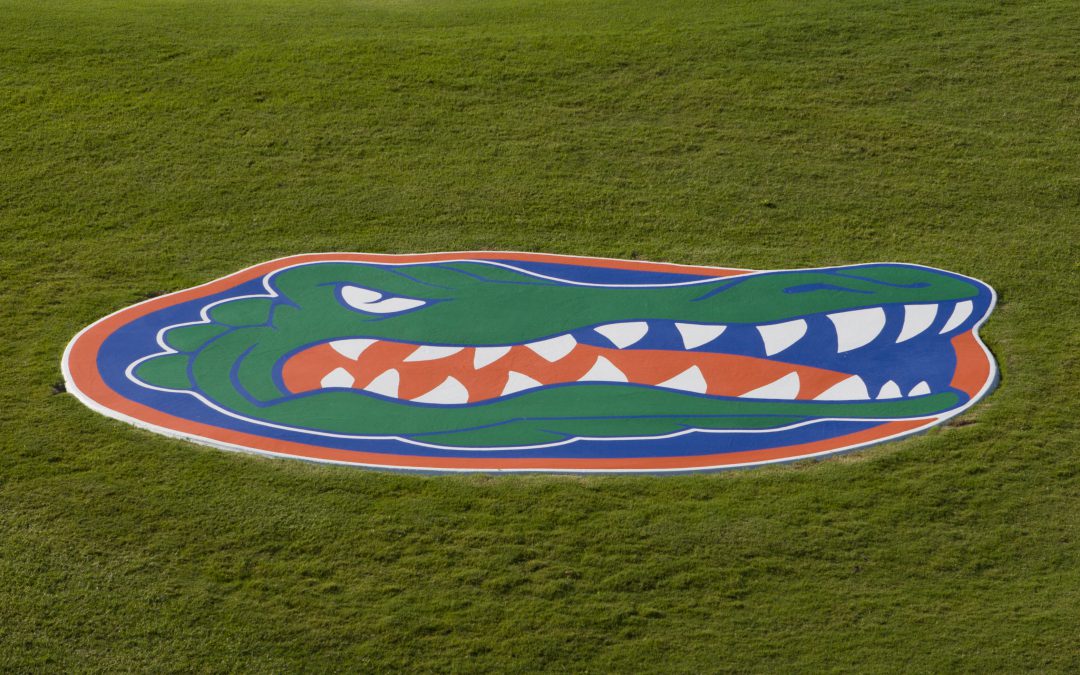
by Sheila Dunning | Apr 27, 2020
Turf pros, you have fought for years to try to get enough downtime on your sports turf to really work on making big improvements. Now, with school and city leagues cancelled, is the perfect time. The grass has
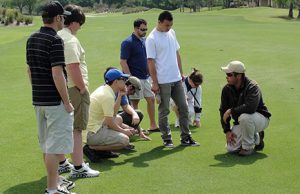
https://plantscience.ifas.ufl.edu/turfgrass-science/
greened up and is needing mowing. The soil temperatures are up. We have gotten a decent rain with more predicted. So, plan to make some of those much-needed improvements in May.
If you haven’t submitted soil samples, start with getting that baseline information. All the labs are open and working, including UF. Sampling kits and instructions are available at: https://soilslab.ifas.ufl.edu/ESTL%20Tests.asp.
Get out there and fix all the irrigation system imperfections. Knowing the water output and uniformity can make all the difference in the turf appearance and response to fertilizers, not to mention reducing disease pressure. Make sure you have head-to-head coverage, not the “almost” head-to-head coverage that cheats a few feet here and there. Calibrate each zone to determine how much time it takes to deliver ¾ inch of water. Watch this video for more information: https://www.youtube.com/watch?v=W_wn-hwLNtg
Take this time to accurately measure the areas that will need fertilizing and calibrate your spreader to you and the product. Set the application schedule for the rest of the year. Accomplishing this now when you’re not so pressed for time will pay off. Remember with rotary spreaders, fertilizer distribution is not uniform. More granules fall in the middle of the pass than along the outer edges. To achieve uniformity, check that the tire is just inside the track from the previous pass and that the granules are reaching the previous track. Additionally, apply in two directions.
How about reducing compaction and improving the overall soil conditions? That’s the one project you’ve been wanting to do for many seasons. Physical penetration of the soil improves air, water, and nutrient movement within the root zone. This is especially important for high traffic areas. A hollow tine, or core, aerator pulls soil cores from a 2-6 -inch depth. Cores can be removed or dried on the surface and reincorporated using a drag mat. If thatch is an issue, consider vertical mowing to cut into the turf runners and loosen the dead tissue layer. Then, rake, rake and rake! The grass will look rough for a while during the recovery but will be much healthier in the long run.
When you get your soil test results back, they will identify nutrient deficiencies and recommend lime and fertilizer for the year. Lime should only be applied in accordance with the recommendations on soil test results. Over-application can take years to correct. Split applications of the annual required rate will allow for more adjustment. Nitrogen influences color and many growth factors. Application rate recommendations are based on research-driven requirements for each grass type. However, nitrogen comes in quick-release and/or slow-release. Quick release products are water soluble and cause a turf response in a week or less but can evaporate or burn. Application should always be followed by ¼ inch of irrigation to get the most benefit. Slow release products are water insoluble and provide a gradual, consistent turf response over a 3-10-week period. They require warm, moist soil with microbes in order to release nitrogen. Most of the available fertilizers will have a combination of both quick and slow release components. That way there is an immediate green up with long lasting color. Bermudagrass needs 0.5-1 pound of soluble N/ 1,000 sq. ft. to get going in the spring.
You’ve been saying, “We need to get some of these big tasks done, but just can’t find the time when no one is on the field.” Here’s your chance.
by Sheila Dunning | Jul 12, 2018
As of January 2015 the labels on fertilizer bags have changed. Florida Rule 5E-1.003 required fertilizer manufacturers to modify their package recommendations and wording.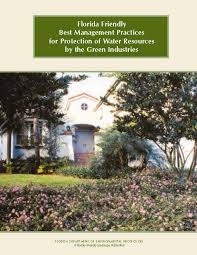
“Specialty fertilizers” was one of the more significant changes. This included packages that weigh 49 pounds or less and are labeled for home (residential) lawn use. The new labeling requirement for fertilizers labeled for use on urban lawns included that these products must be no phosphate or low phosphate. “No phosphate” fertilizers will be expressed as zero in the guaranteed analysis. “Low phosphate” fertilizers typically have 2% when labeled for residential lawns. Additionally, the recommended application rate must not exceed 0.25 lbs. P2O5 / 1,000 square feet per application and cannot exceed 0.50 lbs. P2O5 / 1,000 square feet per year. The only exception is “starter fertilizers”, which is a fertilizer formulated for a one-time application at planting or near that time to encourage root growth. A starter fertilizer can recommend a one-time application rate of 1.0 lb. of P2O5 / 1,000 square feet.
The Label is the Law
Application rates cannot be exceeded and the site must be on the label. The “site” refers to the specific grass area that the application is intended for. So, for fertilizer packaging under Rule SE-1.003 there a few definitions you need to understand:
- “Urban Turf” or “Lawns” means non-agricultural land planted in closely mowed, managed grasses except golf courses, parks and athletic fields.
- “New Urban Turf” means residential lawns established less than 12 months.
- “Actively Growing Turf” means turf that needs mowing at least once every two weeks to maintain the grass blade height according to the UF/IFAS recommendation.
- “Established Urban Turf” means residential lawns older than 12 months.
In addition to restrictions on phosphate, the Urban Turf Rule restricts the use of nitrogen. The amount that can be applied at once, as well as, annually and the seasonal application timing are defined based on the different regions of Florida. Local ordinances may be even more restrictive than the fertilizer label.
The following language must appear on all fertilizers sold at retail:
- “Apply only to actively growing turf”.
- “Do not apply near water, storm drains or drainage ditches”.
- “Do not apply if heavy rain is expected”.
- Apply this product only to your lawn and sweep any product that lands in the driveway, sidewalk or street back onto your lawn.
Finally, the labeling requirements for fertilizers that come in 50 pound bags or larger include that the directions for use cannot exceed rates recommended in the document entitled “Florida Friendly Best Management Practices for Protection of Water Resources by the Green Industries” (GI-BMP). The GI-BMP restricts nitrogen applications to less than what the label states. If the slow-release component of the overall nitrogen percentages is 30% or greater, the product can be applied at 1.0 lb. of N / 1,000 sq. ft. If it is less than 30%, then the rate is only 0.50 lb. N / 1,000 sq. ft.
The next time you are shopping for fertilizer, take the time to read the bag. Know that you are applying it correctly and legally.
By the way, if you are being compensated for applying fertilizer, FDACS requires a Limited Urban Commercial Fertilizer application certification with a pre-requisite of GI-BMP training.
Upcoming classes in Northwest Florida
Statewide GI-BMP classes

 No previous experience or accreditation it required to be a landscaper in the state of Florida. So when homeowners are searching for service providers, it is important that they question potential companies about their skills. One good measure is completion of voluntary certifications such as the Florida Nursery, Growers and Landscape Association (FNGLA) Certified Horticulture Professional (FCHP). The FCHP program has been the industry’s standard for measuring horticulture and landscape knowledge since 1984. The training is also useful for property managers, homeowner associations, retail garden center employees, or anyone that wants to know more about Florida’s plants and their care.
No previous experience or accreditation it required to be a landscaper in the state of Florida. So when homeowners are searching for service providers, it is important that they question potential companies about their skills. One good measure is completion of voluntary certifications such as the Florida Nursery, Growers and Landscape Association (FNGLA) Certified Horticulture Professional (FCHP). The FCHP program has been the industry’s standard for measuring horticulture and landscape knowledge since 1984. The training is also useful for property managers, homeowner associations, retail garden center employees, or anyone that wants to know more about Florida’s plants and their care.




